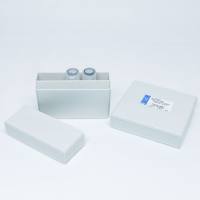Characterization of Heterologously Expressed Transporter Genes by Patch- and Voltage-Clamp Methods: Application to Cyclic Nucleotide-Dependent Respons
互联网
666
The application of patch- and voltage-clamp methods to study ion transport can be limited by many �hurdles: the size of the cells to be patched and/or stabbed, the subcellular localization of the molecule of interest, and its density of expression that could be too low even in their own native environment. Functional expression of genes using recombinant DNA technology not only overcomes those hurdles but also affords additional and elegant investigations such as single-point mutation studies and subunit �associations/regulations. In this chapter, we give a step-by-step description of two electrophysiological methods, patch clamp and two-electrode voltage clamp (TEVC), that are routinely used in combination with heterologous gene expression to assist researchers interested in the identification and characterization of ion transporters. We describe how to (1) obtain and maintain the cells suitable for the use with each of the above-mentioned methods (i.e., HEK-293 cells and yeast spheroplasts to use with the patch-clamp methodology and Xenopus laevis oocytes with TEVC), (2) transfect/inject them with the gene of interest, and (3) record ion transport activities.









